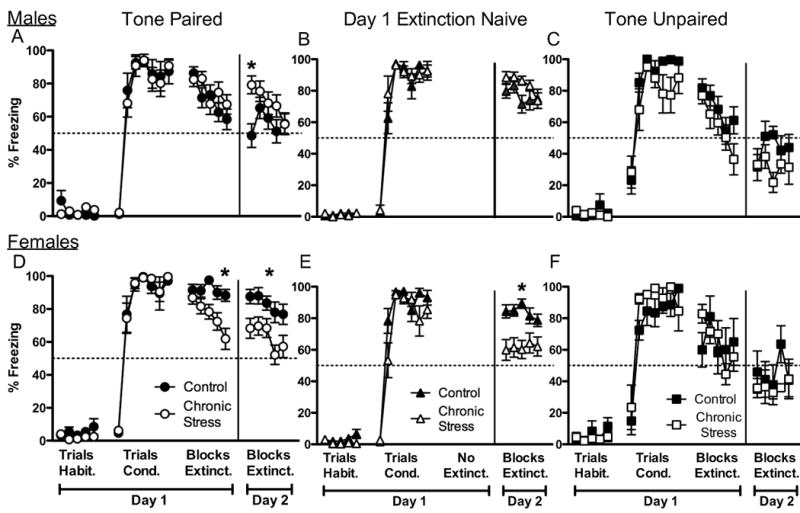Figure 1.

Percentage of freezing to tone during fear conditioning and extinction in male and females rats. A. Note the enhanced freezing to tone of the chronically stressed males during the first block of extinction on day 2, despite showing similar freezing to tone as control males during fear conditioning and extinction on day 1. B. When tone was paired with footshock, but no extinction trials were given on day 1, male rats (control and chronic stress) receiving extinction to tone on the second day maintained high and similar levels of freezing to tone. C. When tone and footshock were explicitly not paired (unpaired), freezing to tone decreased across blocks during extinction on day 1 for both control and chronically stressed males. Notably, the chronically stressed males showed freezing to tone near 20% on day 2, which never fell below 50% when tone and footshock were paired (compare to A and B). D. When tone was paired with footshock, chronically stressed female rats froze to tone significantly less than did the controls during extinction on day 1, and this pattern continued during extinction on day 2. E. When the tone was paired with footshock, but no extinction trials were given on day 1, chronically stressed females froze less to tone than did the controls. F. When tone and footshock were explicitly not paired (unpaired), female rats (control and chronic stress) froze less to tone than did rats in the paired conditioning paradigm (compared to D). Habit. = habituation trials; Cond. = conditioning trials; Extinct. = extinction trials. Data represent means ± S.E.M. * p < 0.05 compared to controls. Controls = black symbols; Chronic stress = white symbols. n = 8 to 10 rats/group.
